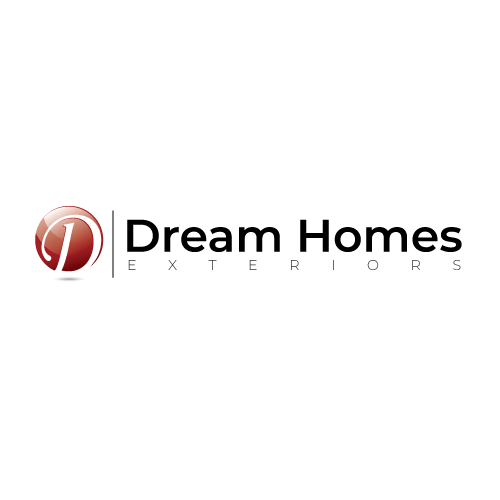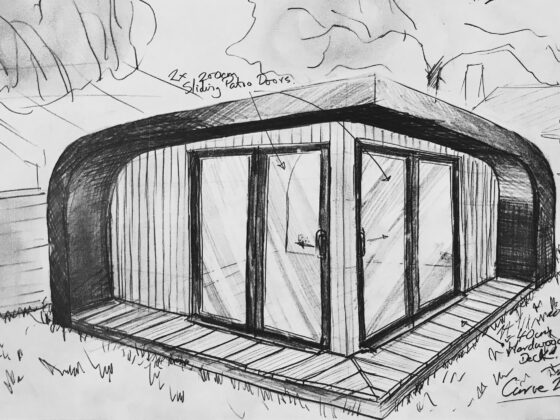Flat roofs are a common sight in modern architecture, offering a sleek and functional design. However, they come with their fair share of challenges regarding maintenance and repair. Explore the world of flat roofing repair by understanding common issues and practical solutions to keep your roofing in top-notch condition.
The Flat Roof Predicament: Understanding Common Issues
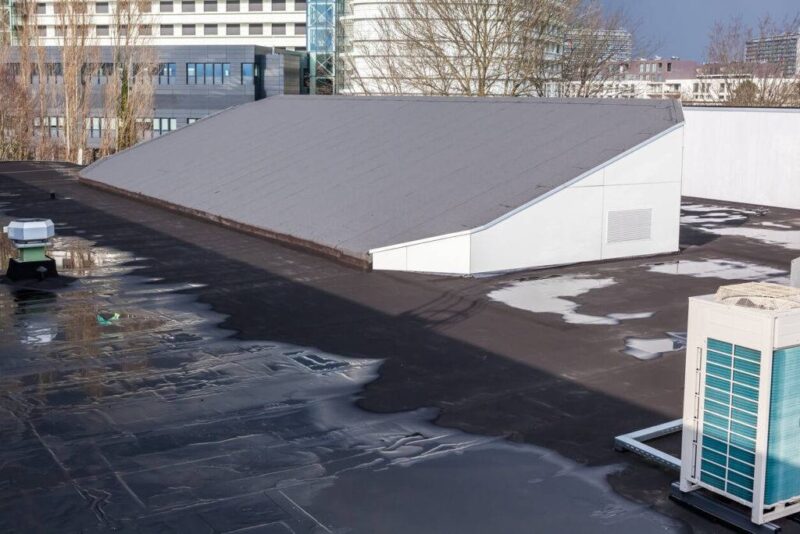
Before diving into solutions, it’s crucial to identify the most common problems that plague flat roofs.
Ponding Water Woes
- Ponding water occurs when water accumulates on the roof, leading to structural stress and potential leaks.
- Understanding the causes of ponding water is the first step in addressing this issue effectively.
Membrane Miseries
- Flat roofs typically use various membranes, such as EPDM or TPO, which can degrade over time due to exposure to the elements.
- Identifying membrane issues early on is essential to prevent leaks and structural damage.
Flashing Failures
- Flashing is critical in preventing water infiltration around roof penetrations like vents and chimneys.
- Damaged or improperly installed flashing can lead to costly repairs and water damage.
Blistering & Bubbling
- Blisters and bubbles on the roof’s surface indicate issues with the adhesive or moisture trapped beneath the roofing material.
- Identifying the root cause is key to preventing further damage.
The Art of Flat Roof Inspection
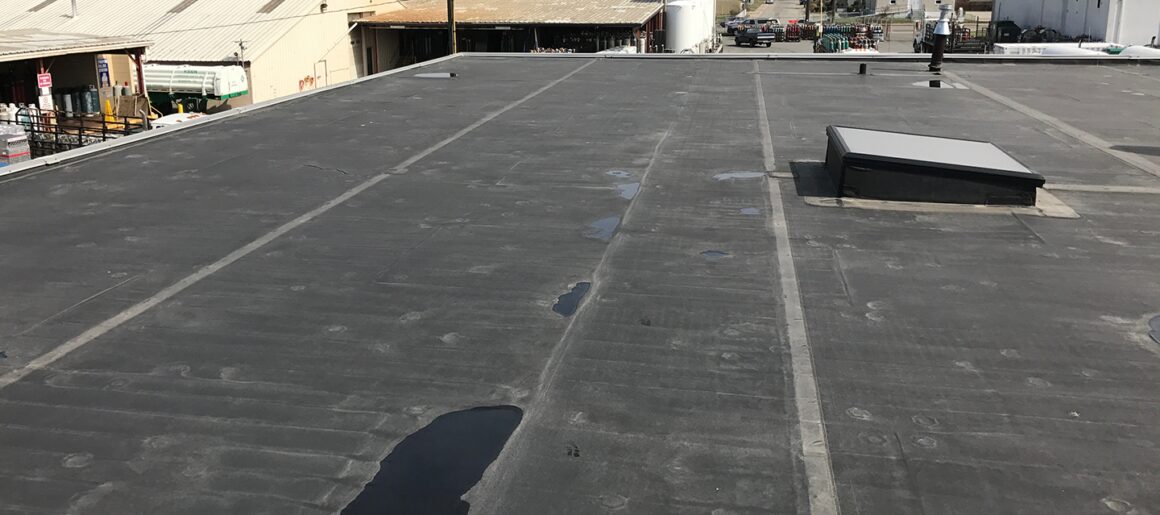
Regular inspections are your first line of defence against flat roof issues.
The Importance of Routine Checks
- Establishing a consistent inspection schedule allows you to spot issues early, reducing repair costs.
- Inspect the roof after severe weather events and at least twice yearly for preventive maintenance.
DIY vs. Professional Inspections:
- While some homeowners may perform visual inspections, professional inspections provide a more comprehensive assessment.
- Professionals can identify hidden issues and recommend targeted solutions.
Addressing Ponding Water
Ponding water is a common issue on flat roofs and should not be underestimated.
Drainage Solutions
- Adequate drainage systems, including roof drains and scuppers, help redirect water off the roof.
- Regular maintenance of these systems ensures they remain functional.
Sloping Strategies
- Correcting the slope of the roof can mitigate ponding water issues.
- Professional roofers can assess the slope and make necessary adjustments.
Waterproof Membranes
- Installing a waterproof membrane beneath the roofing material can add an extra layer of protection against leaks caused by ponding water.
Tackling Membrane Problems

Membrane issues are a common concern for flat roof owners.
Membrane Inspections
- Regularly inspect the membrane for cracks, tears, or punctures.
- Early detection allows for patching or replacement of damaged sections.
Seam Sealants
- Properly sealing seams and joints in the membrane prevents water infiltration.
- High-quality sealants and regular resealing can prolong the life of the roof.
Roof Coatings
- Applying a reflective roof coating can protect the membrane from UV damage and extend its lifespan.
- Coatings can also improve energy efficiency by reflecting sunlight.
Flashing Fixes
Flashing is a critical component in flat roof systems.
Flashing Inspections
- Inspect all flashing areas, including around roof penetrations and along parapet walls.
- Look for signs of damage, corrosion, or separation.
Flashing Replacement
- Damaged flashing should be promptly replaced to prevent water intrusion.
- Professional roofers can ensure proper installation and sealing.
Dealing with Blisters & Bubbles
Blisters and bubbles can compromise the integrity of your flat roof.
Identifying Causes
- Determine the underlying cause of blisters and bubbles, which may include poor adhesion, trapped moisture, or thermal expansion.
- Accurate diagnosis is crucial for effective repairs.
Repair or Replacement
- Small blisters can often be repaired by cutting and sealing the affected area.
- Extensive blistering may warrant membrane replacement to prevent further damage.
The Role of Preventive Maintenance
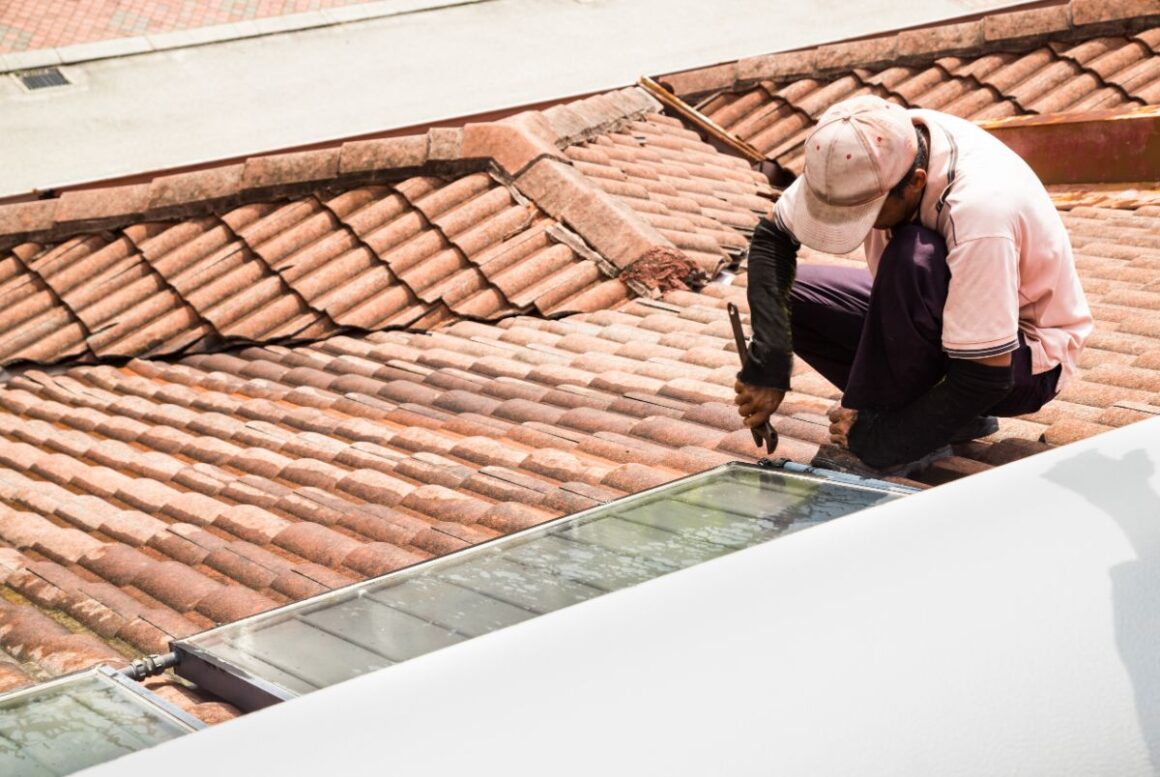
Preventive maintenance is your best defence against flat roof issues.
Scheduled Maintenance
- Implement a regular maintenance schedule with a qualified roofing professional.
- Professional inspections can catch issues before they become major problems.
Clearing Debris
- Keep the roof free of debris, leaves, and branches that can clog drains and create water dams.
- Regular cleaning ensures proper water drainage.
The Decision: Repair or Replacement?
Knowing when to repair or replace your flat roof is essential for cost-effective maintenance.
Repair Considerations
- Repair is a viable option for localized issues and minor damage.
- Regular inspections help catch problems early, allowing for timely repairs.
Replacement Necessities
- Extensive damage, recurring issues, or an aging roof may require a full replacement.
- Professional roofing contractors can assess the condition and provide recommendations.
Flat roofing repair may seem daunting, but with proactive maintenance and timely intervention, you can ensure the longevity and reliability of your roofing system. Regular inspections, addressing ponding water, and tackling membrane issues are all part of responsible flat roof ownership. By understanding the common issues and their solutions, you can navigate the world of flat roof maintenance with confidence, safeguarding your investment and your peace of mind.
